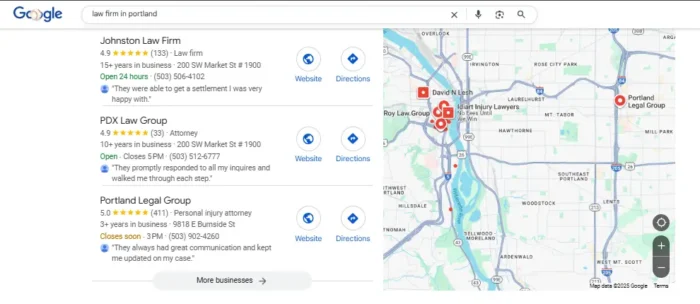VIDEO: Why do mantras work — and sometimes don’t! What are the 3 requirements for mantra use?
Why do mantras sometimes seem to work and other times do not? What is the fuel that makes the mantra engine run? Why can’t I use Buddhist mantras for negative intentions? What is the three minimum practice requirements...

 Video thumbnail: Why Mantras Work — and sometimes do not. Video below.
Video thumbnail: Why Mantras Work — and sometimes do not. Video below.
Why do mantras sometimes seem to work and other times do not? What is the fuel that makes the mantra engine run? Why can’t I use Buddhist mantras for negative intentions? What is the three minimum practice requirements for mantra use? We answer these questions, and more, in this short, helpful how-to presentation.
Video:
Not long ago, one of our subscribers asked why a mantra wasn’t working for them. Sometimes, the answer is simple. For example, this person tried a mantra three of four times in one day, and then concluded it didn’t work and asked why.
Mantras are an accumulation practice. You accumulate merit with each repitition, which is why we often use malas to count our recitations. Dabbling in mantras, doesn’t really work unless you’ve accumulated previous merit, and chanted with faith and the right intentions. We covered the 9 benefits of Buddhist mantra and how they work in a previous video, linked at the information icon.
Mantra practice in Buddhism is called the Mantrayana. This literally means mantra vehicle. For this reason, we’ll lean into the metaphor of a car or vehicle.
There are three, absolute, minimum requirements to practicing mantras. For some mantras, there are more than these three, such as restricted mantras requiring permission and empowerment. Here, we’re speaking of non-restricted supplication mantras, such as some of the Tara mantras. We’re also answering the question “Why didn’t the mantra work?”
Sutra transmitted mantras and Dharanis inevitably have no result if any of the three foundations of faith, bodhichitta and merit are missing. In the question that inspired this video, our subscriber did not accumulate merit through sustained, mantra practice, and dedicating the merit for the benefit of others.
The number one requirement, according to Kyabje Garchen Rinpoche is “Bodhichitta.” This means we always have the intention to ultimately become enlightened for the benefit of all sentient beings. Using mantras for negative intentions is a no-starter.
We practice Bodhichitta in a number of ways, such as practicing generosity, and dedicating the merit of practice to the benefit of all sentient beings. We show Faith by Taking Refuge in the Three Jewels and our sincere trust in Buddha Dharma. Merit, itself, we accumulate through our conduct, especially following the Buddhist precepts, and through activities such as mantra recitation. In another video we covered the four foundations and 9 tips for chanting mantra effectively, linked at the information icon.
To use our modern metaphor of a vehicle or car, mantra is like the fuel for an engine. If our Buddha Dharma practice is an engine, there are a number of things required to make that engine run. Merit, such as mantra accumulation and other meritorious practices such as offerings are the fuel for the engine. But, our engine is made up of many parts.
In this metaphor, Bodhichitta is the battery that starts your vehicle or “yana”. Faith is the engine. Mantra and Merit are the fuel.
If the engine isn’t maintained, in a very short time it will stop running. Mantra is no different. If we expect mantra to magically solve all our troubles, and we don’t have faith or practice, or we engage in negative activity, we’ll be disappointed.
Even though teachers and lineage teachings specifically say that mantras work without us understanding how, or even what the syllables mean, it is important to understand that this assumes a practitioner who is already practicing Refuge, Bodhichitta and other basic foundational practices.
The one way mantra works without maintaining your Dharma engine, is if you take the bus. This is akin to attending or requesting a puja and mantras from a qualified sangha or teacher. For example, many lay Buddhists sponsor a puja for healing or other purposes. That’s taking the bus. It will get you there.
If you want to drive yourself, you need to learn how. For this we also have teachers. There are also practice resources such as this Buddha Weekly Youtube Channel to help. Our mantra videos are called “practice support” — they don’t substitute for actual practice.
What then, are the full minimum requirements if we’re not taking the puja bus and driving our own Dharma engine?
If we have Bodhichitta, we have the main requirement. Bodhichitta is our fully charged battery.
If, for example, we felt threatened by someone attacking us, or we suspect evil forces are attacking us, there are mantras to “destroy your enemies.” Enlightened Deities cannot help you in this way. Buddhist mantras help suppress the triggering emotions. The real enemy to be destroyed is the hate, or pride, or jealousy that makes them attack you.
If you try to use a Buddhist mantra in away that breaks the Buddhist precepts, such as ‘not taking a life’ not only would it not work, it is negative karma for you. You have a flat battery in our metaphor.
After Bodhichitta is faith. These are the keys to your car. If you’re dabbling because someone said this mantra works, but you have no faith at all, in our metaphor this is the equivalent of having lost your car key.
Finally, the fuel for your vehicle is merit. Mantra recitation helps accumulate merit, as do offerings, requesting pujas, practicing the four generosities and other karmic activities.
You’ll need all three for the mantra engine to run.
These are the reasons the teacher’s sometimes say mantra is a complete practice. It is called Mantrayana or the vehicle of Mantra — which is appropriate to our car metaphor. It is a complete vehicle or “yana” if you have all three of Bodhichitta, Faith and Merit. Without any one of these, it is time for a spiritual tuneup.
We dedicate the merit of this presentation to the cause for enlightenment for the benefit of all sentient beings.
Videos mentioned:
9 Benefits of Buddhist Mantra and How to Practice, How to Recite and How to Accumulate Merit:
How to Chant Mantras Padmasambhava’s 4 Foundations 9 Tips from Teachers / Buddhist Teachings

 Aliver
Aliver 
















.jpg&h=630&w=1200&q=100&v=6e07dc5773&c=1)















